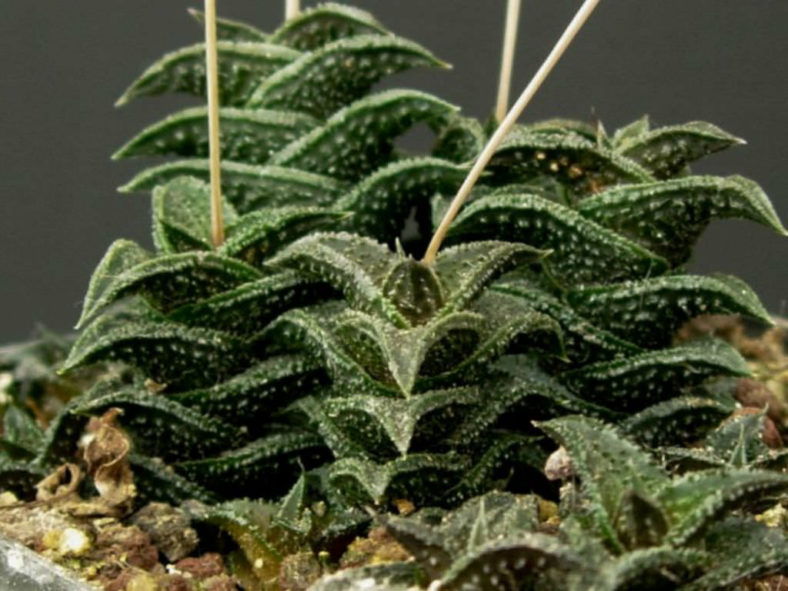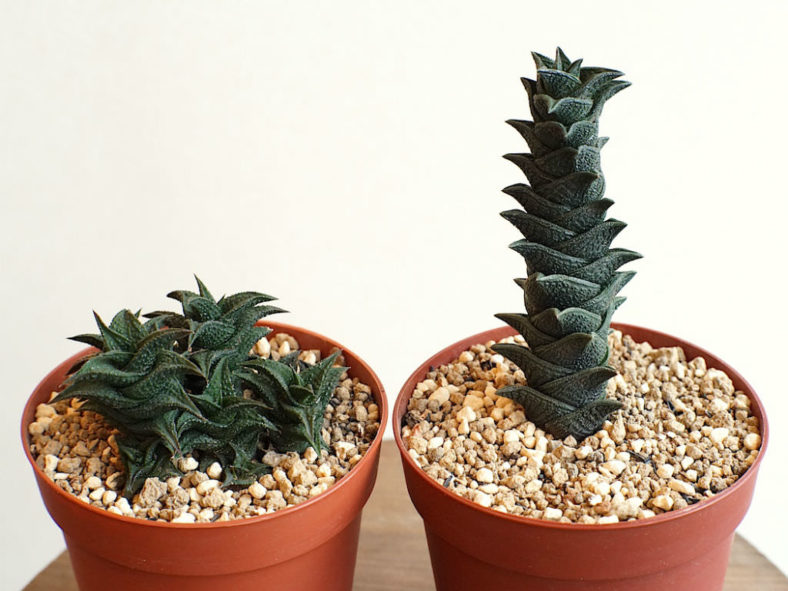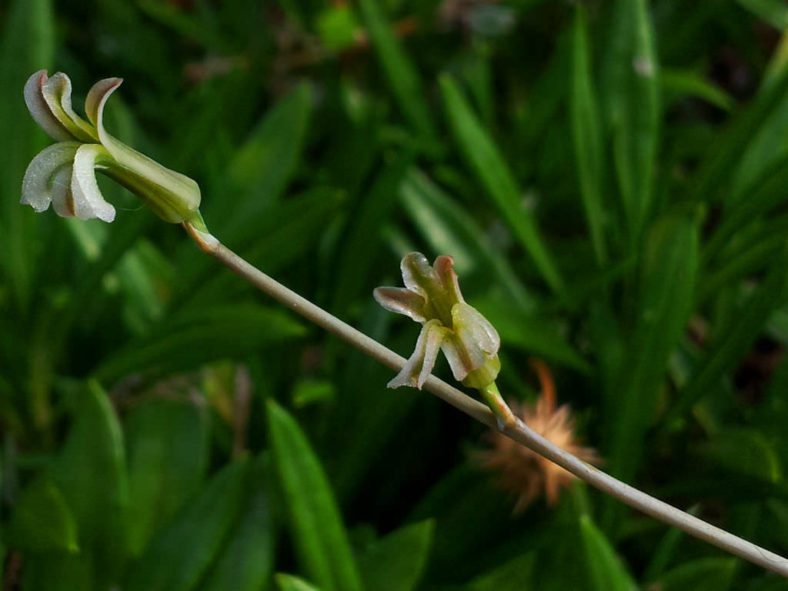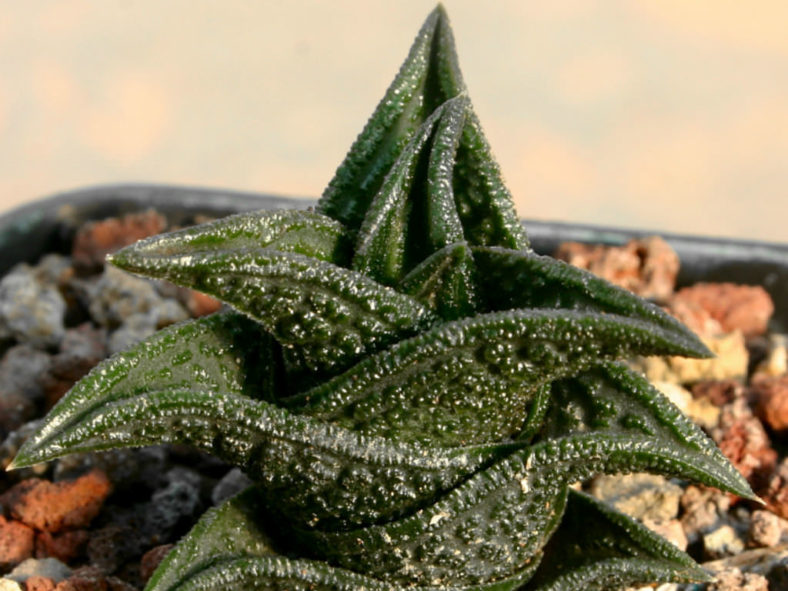Scientific Name
Haworthiopsis nigra (Haw.) G.D.Rowley
Common Name(s)
Black Haworthia
Synonym(s)
Aloe nigra, Apicra nigra, Catevala nigra, Haworthia nigra, Haworthia venosa subsp. nigra, Haworthia viscosa subsp. nigra
Scientific Classification
Family: Asphodelaceae
Subfamily: Asphodeloideae
Tribe: Aloeae
Genus: Haworthiopsis
Etymology
The specific epithet "nigra" (pronounced "NY-gruh") means "shining black" and refers to the color of the leaves of this species.
Origin
Haworthiopsis nigra is native to South Africa. It grows from near East London to the north of Loeriesfontein, hidden under rocks and bushes on plains, rocky ridges, rocky outcrops, and cliffs.
Description
Haworthiopsis nigra, formerly known as Haworthia nigra, is a small succulent with leathery, blackish to grey-green leaves with many raised tubercles. It can grow up to 5 inches (5 cm) tall, occasionally taller, and slowly produce offsets, forming small clumps over time. The leaves are ovate-deltoid, measuring up to 1.2 inches (3 cm) in length and 0.6 inches (1.5 cm) in width. They may be recurved and elongated away from the stem or short and compressed upon one another. Each new leaf emerges from the center atop the one below it, lending plants a stacked or tiered look. Overall, the foliage remains dark green with varying grades of gray to black.
In late spring or summer, mature rosettes produce simple, lax stalks with small, white flowers.

Varieties of Haworthiopsis nigra
- Haworthia nigra var. diversifolia: This variety occurs in the western part of its range, specifically in the Western Cape province, near Loeriesfontein.
- Haworthiopsis nigra var. nigra: This variety occurs to the east of its range, in the Eastern Cape province, and extends as far east as East London.
Hybrids of Haworthiopsis nigra
How to Grow and Care for Haworthiopsis nigra
Hardiness: USDA hardiness zones 10a to 11b: from 30°F (-1.1°C) to 50°F (10°C).
These succulents are not considered difficult to grow as houseplants. If you can keep a pot of Aloe alive on a windowsill, you can do the same with a dish of Haworthia. As with all succulents, the most common issue is overwatering. They should never be allowed to sit in water under any circumstances. At the same time, these little decorative plants can be grown in interesting containers such as teacups and even miniature baby shoes. If you're given a Haworthia in such a container, ensure the container has adequate drainage.
Haworthias are small, typically ranging from 3 to 5 inches (7.5 cm to 12.5 cm) in height, and are relatively slow-growing. Therefore, they are often grown in small clusters in wide, shallow dishes. Over time, clusters will naturally enlarge as the mother plant sends off small plantlets. When the cluster has outgrown its container, repot it into a new, wide, and shallow container with fresh potting soil in the spring or early summer, which is also the time to take offsets for propagation.
See more at How to Grow and Care for Haworthia.
Links
- Back to genus Haworthiopsis
- Succupedia: Browse succulents by Scientific Name, Common Name, Genus, Family, USDA Hardiness Zone, Origin, or cacti by Genus
Photo Gallery
Click on a photo to see a larger version.


